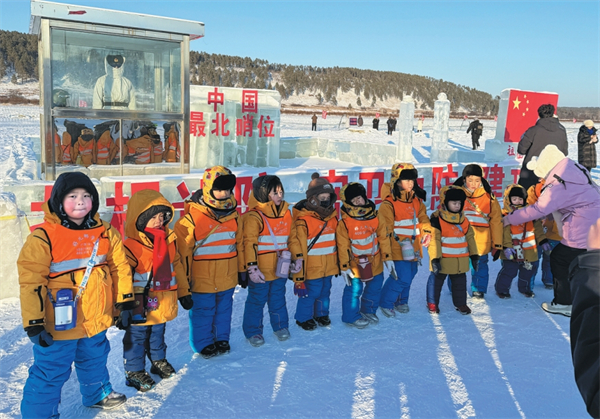Home>Harbin Today
NE China wants to develop emerging industry clusters
Updated : 2016-01-14
By ( e.my399.com )
The city of Harbin, Heilongjiang province has announced that its South Harbin Industrial City will be getting 35 projects worth 24.3 billion yuan ($3.96 billion), on Jan 12, according to the local news portal my399.com, noting that they involve equipment manufacturing, information technology, telecommunications, food, and modern services.
Out of the 35, seven are worth more than 1-billion-yuan investment each and 10 of them worth 100-million-yuan, with the largest deal involving the construction of a data center backed by a 55-million-yuan investment from China Communication, a national telecommunications operator and Internet services provider. This is expected to become the company’s largest data backup center outside its Beijing HQ and to provide value-added services in health care, culture, education, sports, entertainment, old-age care, environmental protection and advertising.
In addition, China’s three telecom operating giants -- China Mobile, China Unicom and China Telecom -- say they plan to build a data base or cloud computing center in the South Harbin Industrial City’s “cloud valley”, which holds a large number of companies in the Internet sector, and e-commerce and big data firms. By the end of 2017, the “cloud valley” center’s total area could reach 100, 000 square meters and will hold more than 25,000 racks and 1 million servers, with a performance of 8.5 pet flops per second.
Thanks to these data and cloud computing projects, the Industrial City is expected to be instrumental developing Harbin’s or the province’s merging industrial clusters. Other projects involve 10 automobile parts companies for the Ford Co, worth 760 million yuan.
The South Harbin Industrial City is an important part of the Harbin Economic and Technological Development Zone, where construction work began in 2010.It now holds 300 large industrial enterprises, with more than half of the city's total industrial output. Its listed companies now account for 66 percent of the city's total and 50 percent of the province's total. This has made it the engine for economic development in the province, and it has become the zone's heart, bringing in talent, logistics, information and capital as part of China’s Belt and Road project.

Harbin ramps up childcare services
A new comprehensive service center for childcare in Harbin is expected to be finished by the end of the year.
-
Talent policies drive enterprise development in Harbin
Harbin's "30 New Talent Policies" represents an iterative upgrade to the talent policy system, helping attract and retain talent to bolster economic and social development.
-
Official website of 2025 Asian Winter Games goes live
Harbin, the host city of the 9th Asian Winter Games, has announced that the official website for the 2025 event has recently gone live.
-
Harbin launches measures to facilitate more foreign trade
In the first three quarters of 2023, the total import and export value of Heilongjiang province's goods trade hit 218.22 billion yuan.





